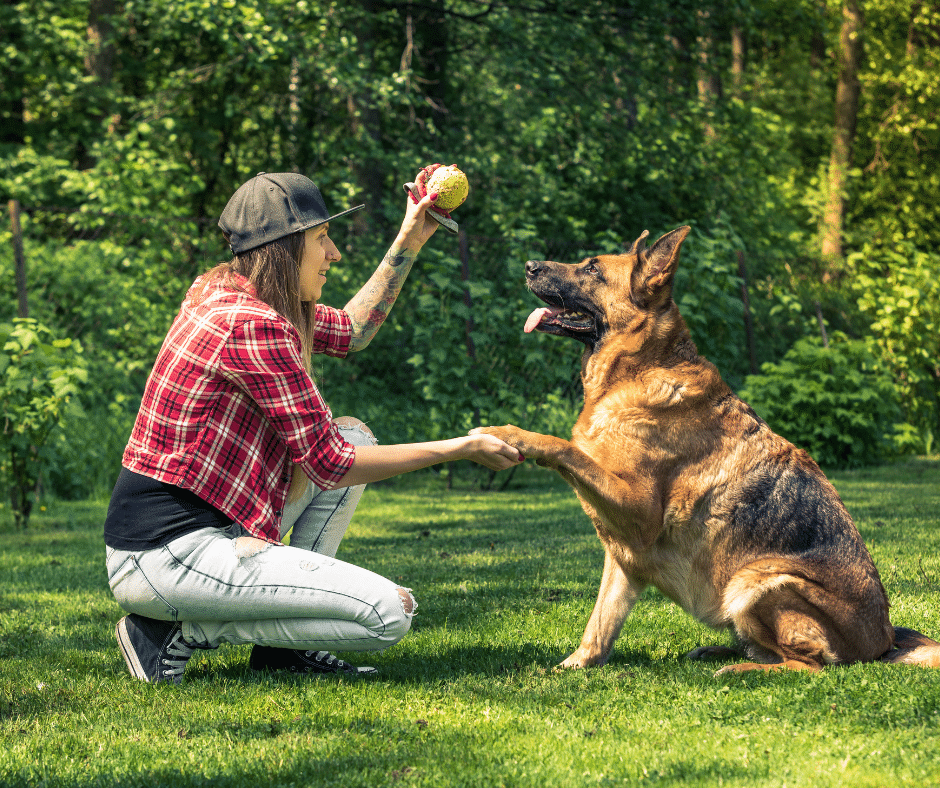As pet owners, we often find ourselves curious about our furry friends’ behavior. Why do they wag their tails? Why do they scratch themselves incessantly? What are they trying to tell us through their body language? Fortunately, understanding your pet’s body language is not rocket science – it just requires a little bit of observation and knowledge of some basic scientific principles.

One of the most common ways that pets communicate with us is through their body posture. For example, a dog that is standing tall with its ears perked up is likely feeling confident and alert. On the other hand, a dog that is crouched down low with its tail tucked between its legs is probably feeling scared or submissive. Similarly, a cat that is arching its back and fluffing up its fur is likely feeling threatened or aggressive, while a cat that is purring and rubbing against you is probably feeling affectionate.
Another important aspect of pet behavior is vocalization. Dogs bark, cats meow, birds chirp – but what do they all mean? Just as with body posture, the context in which the vocalization occurs is key to interpreting its meaning. For example, a dog that is barking loudly and persistently may be trying to alert you to something that it perceives as a threat, such as an intruder or a fire. A cat that is meowing plaintively may be trying to get your attention or asking for food, while a bird that is singing joyfully may simply be expressing happiness.
In addition to their posture and vocalizations, pets also communicate through various other physical cues such as their facial expressions and tail movements. For example, when a dog is feeling happy and relaxed, it may wag its tail vigorously from side to side. However, when a dog is feeling anxious or unsure, it may hold its tail in a low or neutral position. Similarly, when a cat is feeling content, it may close its eyes and purr, while when it is feeling threatened, it may hiss or flatten its ears.
So what is the science behind all of this pet behavior? One important concept to understand is that of “ethology,” which is the study of animal behavior in their natural environments. Ethologists have spent decades observing and analyzing the behavior of various animal species, including domesticated pets, in order to better understand how they communicate and interact with each other and with humans.
One key finding from ethological research is that pet behavior is largely determined by their innate instincts and drives. For example, dogs are descended from wolves, which were pack animals that relied on social hierarchy and communication to survive. As a result, dogs have inherited many of these same instincts, including a strong need for social interaction and a complex system of body language and vocalizations to communicate with other dogs and with humans.
Similarly, cats are descended from solitary hunters that needed to be able to defend themselves against potential predators. As a result, cats have developed a range of defensive behaviors such as arching their backs and hissing to make themselves appear larger and more intimidating.
Understanding the science of pet behavior can not only help you better communicate with your pet, but also prevent potential problems such as aggression or anxiety. By observing your pet’s body language and vocalizations, you can often anticipate how they will react in different situations and take steps to avoid or mitigate any negative behavior.

In addition, understanding your pet’s instincts and drives can also help you provide them with appropriate outlets for their natural behaviors. For example, giving your dog plenty of opportunities to socialize with other dogs and play can help satisfy their need for social interaction and reduce the likelihood of destructive or aggressive behavior. Similarly, providing your cat with plenty of toys and scratching posts can help satisfy their hunting and territorial instincts and prevent them from scratching up your furniture.
In conclusion, understanding your pet’s body language and behavior is a key aspect of being a responsible and loving pet owner. By observing their posture, vocalizations, and other physical cues, you can better understand their needs and desires, and provide them with an environment that supports their natural behaviors. So the next time your pet gives you a strange look or starts acting out of character, take a moment to observe their behavior and try to understand what they are trying to tell you – after all, science has shown us that they are always communicating, even if we don’t always know how to listen.
